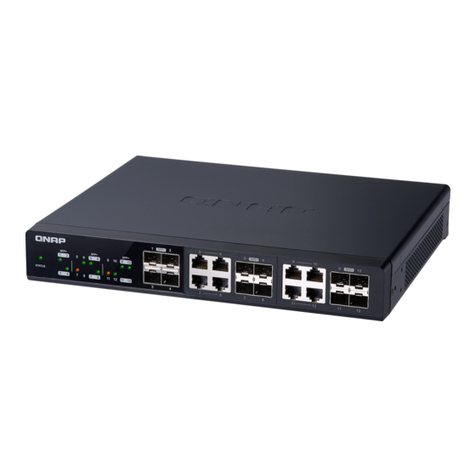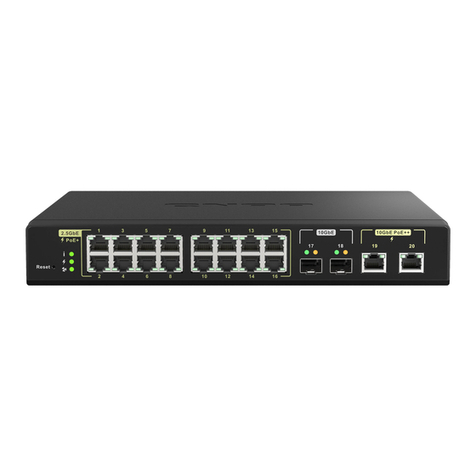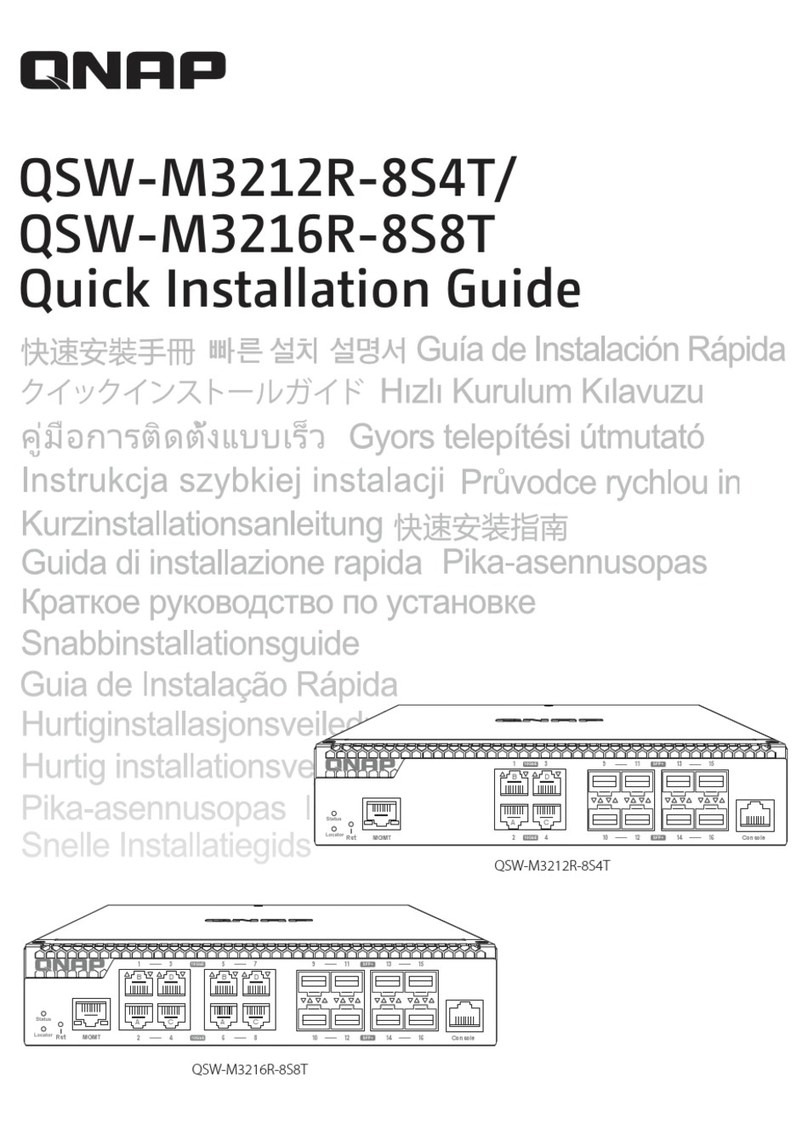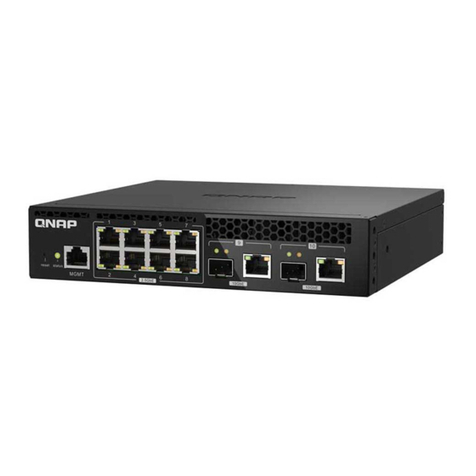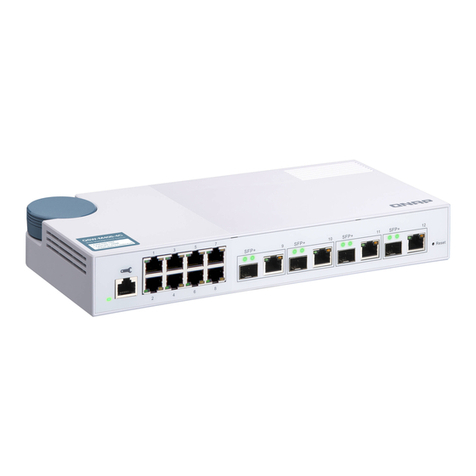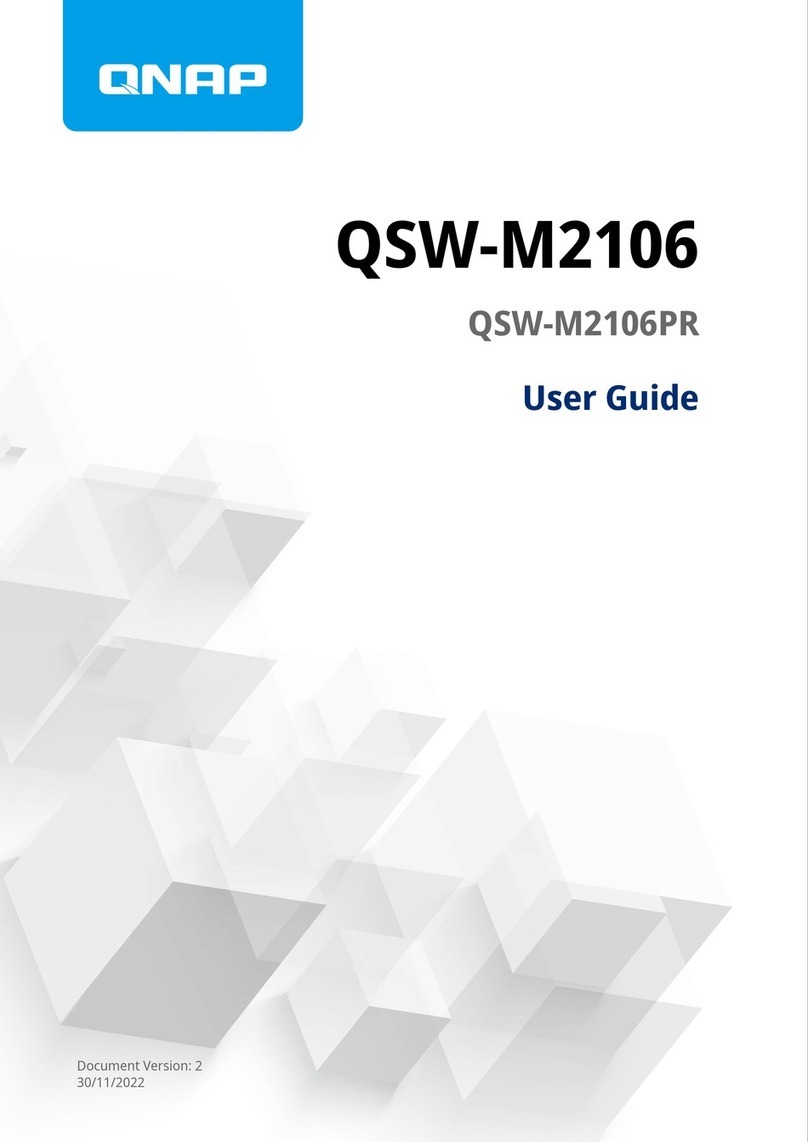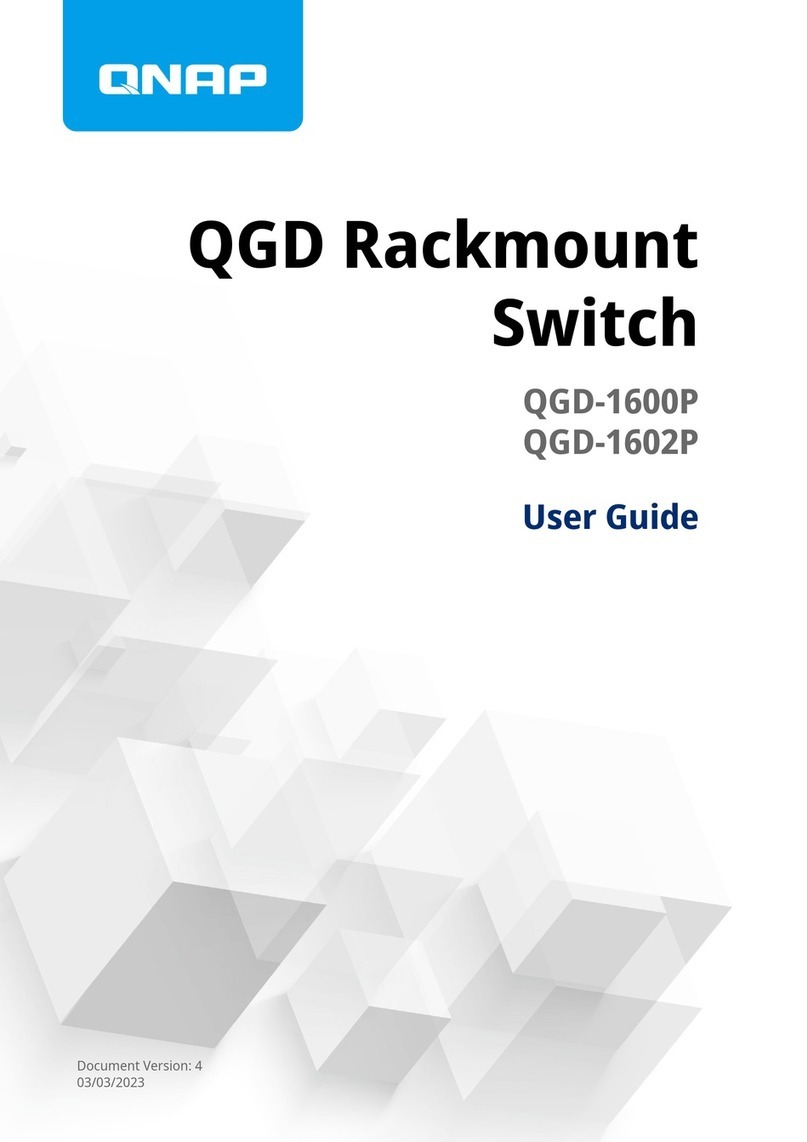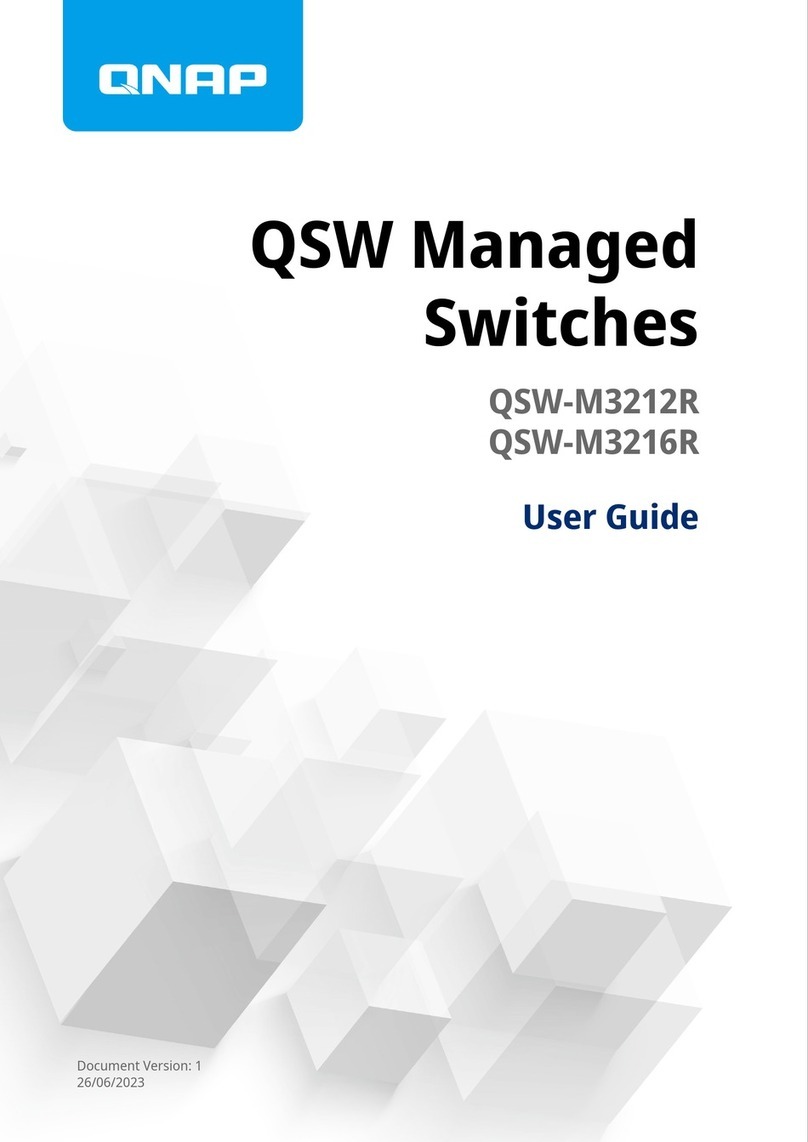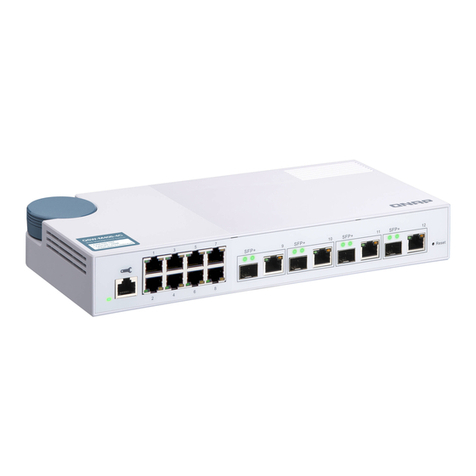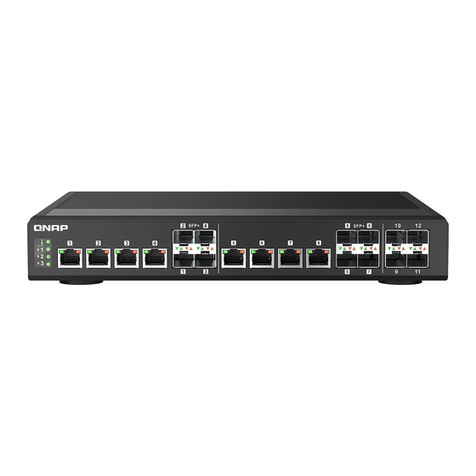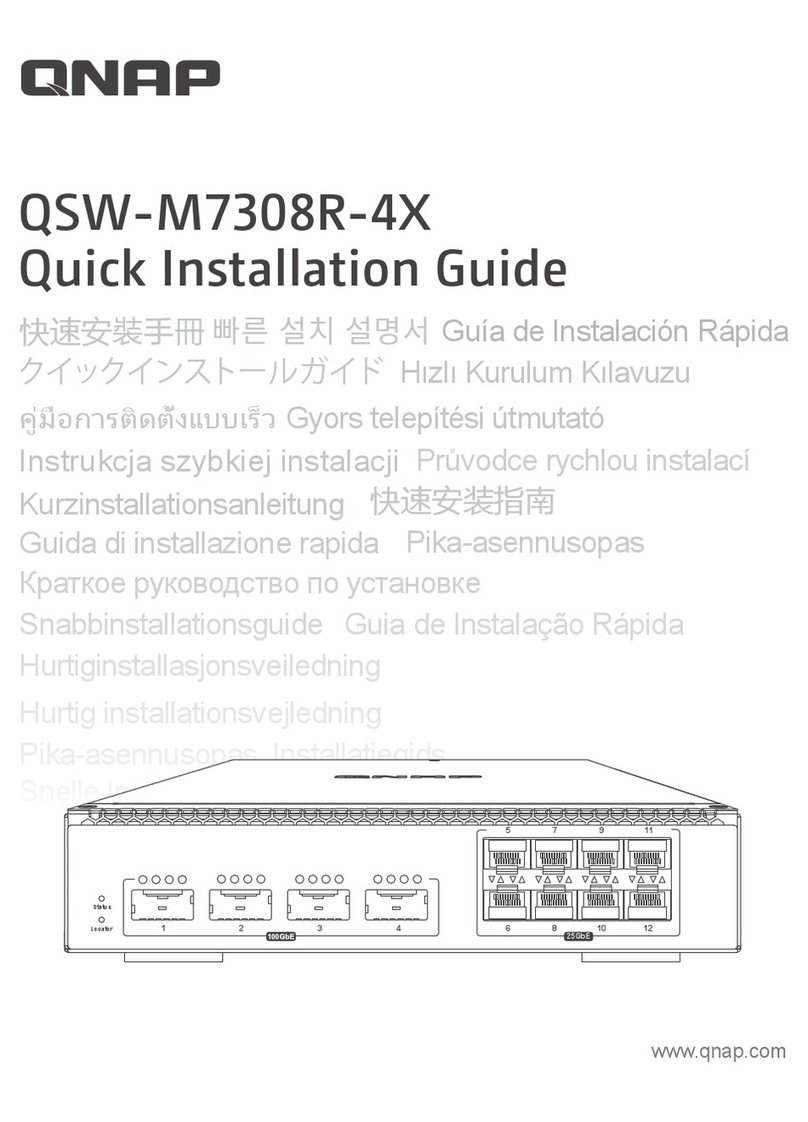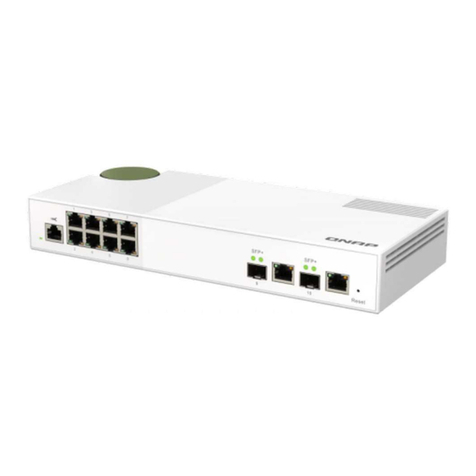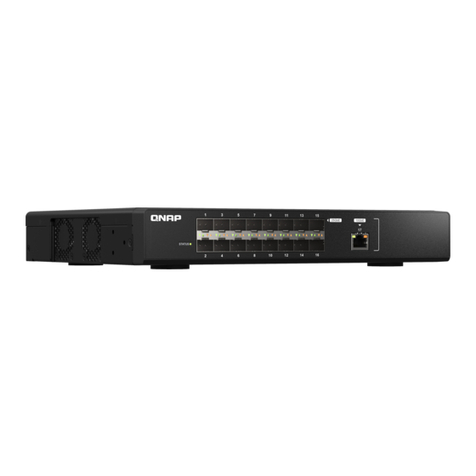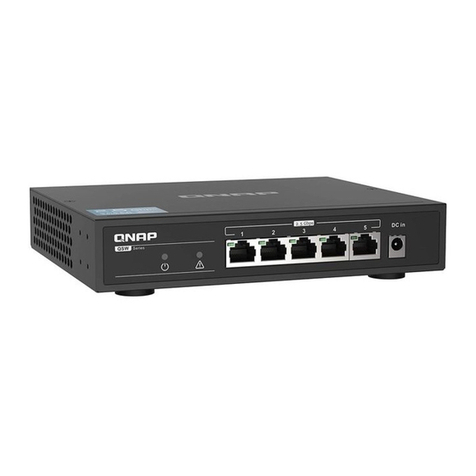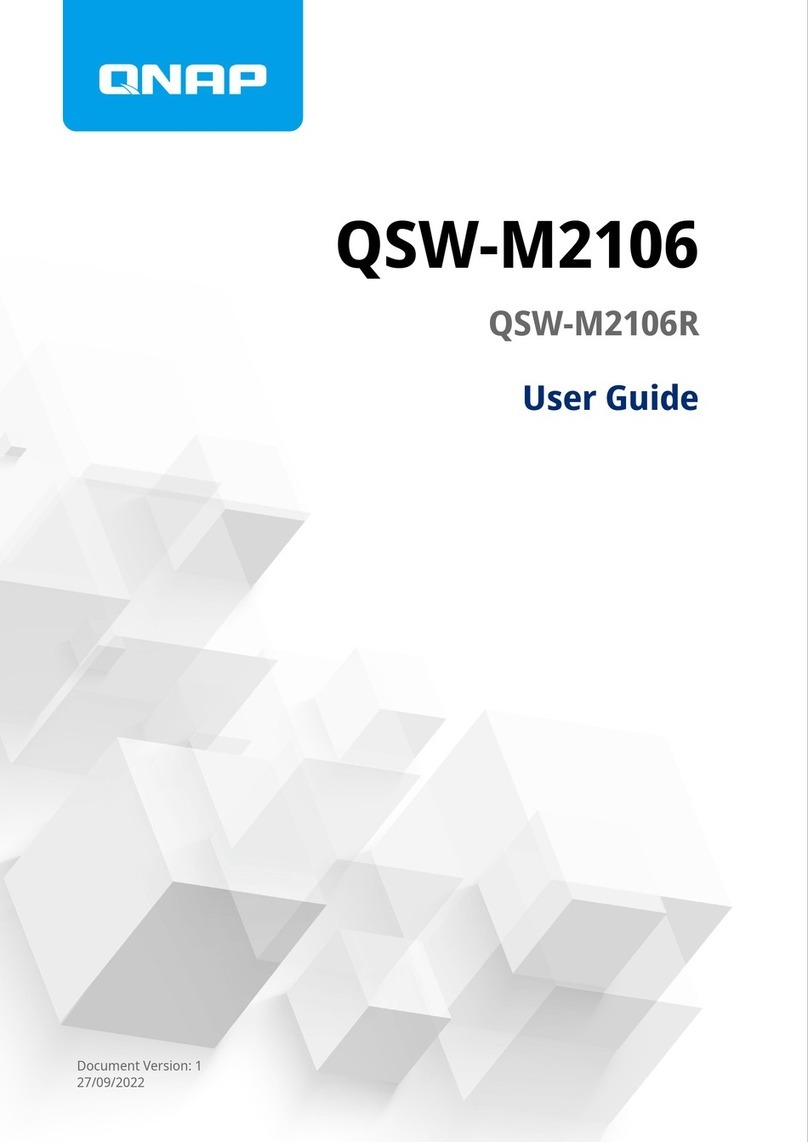
Contents
1. Preface
About This Guide........................................................................................................................................................3
Audience..................................................................................................................................................................... 3
Document Conventions.............................................................................................................................................3
2. Product Overview
About the QSW-M2106..............................................................................................................................................4
Hardware Specications............................................................................................................................................4
Package Contents...................................................................................................................................................... 5
Components............................................................................................................................................................... 5
Front Panel.............................................................................................................................................................5
Front Panel LEDs................................................................................................................................................... 6
3. Installation and Access
Installation Requirements........................................................................................................................................ 8
Setting Up the Switch................................................................................................................................................ 8
Connecting the Switch to a Computer or Network................................................................................................8
Connecting the Switch to a Computer................................................................................................................8
Connecting the Switch to a Network................................................................................................................ 10
Switch Access............................................................................................................................................................11
Accessing the Switch Using a Browser.............................................................................................................11
Accessing the Switch Using Qnder Pro.......................................................................................................... 12
4. Basic Operations
LEDs...........................................................................................................................................................................13
Reset Button.............................................................................................................................................................14
5. QSS
About QSS.................................................................................................................................................................15
Parts of the User Interface..................................................................................................................................... 15
Getting Started.........................................................................................................................................................16
Network Management............................................................................................................................................ 16
Conguring Port Settings.................................................................................................................................. 16
Adding a VLAN.....................................................................................................................................................17
Adding a Link Aggregation Group (LAG).......................................................................................................... 17
Managing Rapid Spanning Tree Protocol (RSTP) Settings..............................................................................18
Conguring the LLDP Settings.......................................................................................................................... 19
Adding a Static MAC Address.............................................................................................................................19
Conguring IGMP Snooping..............................................................................................................................20
Conguring QoS Settings...................................................................................................................................20
Managing Access Control List (ACL) Entries.....................................................................................................22
Deleting a Network Setting................................................................................................................................23
Monitoring Network Settings............................................................................................................................ 23
System Management.............................................................................................................................................. 24
System Settings...................................................................................................................................................24
Firmware Update................................................................................................................................................ 29
6. Support and Other Resources
7. Glossary
QSW-M2106 User Guide
1
